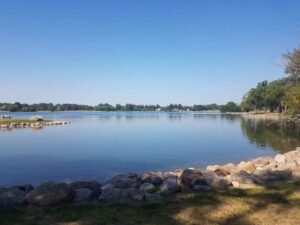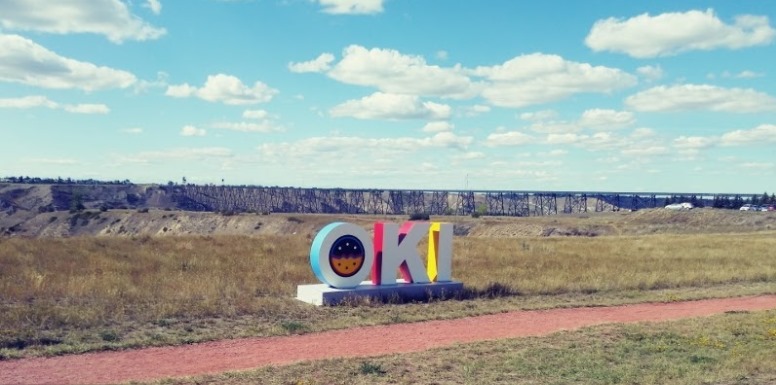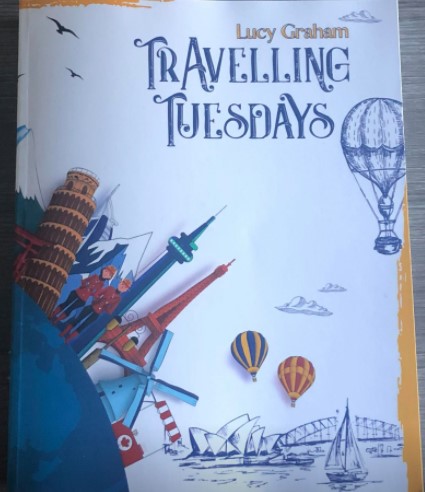Make Positive Ripples and Be Full of Life!
Make Positive Ripples and Be Full of Life!

Make Positive Ripples and Be Full of Life! - Day 514 - Daily Content Challenge
There are millions of lakes in the world and they are found on every continent and in every kind of environment. A lake is a body of water that is surrounded by land. Lakes can vary in size with a small lake being called a pond.
There are five key features that define a lake. Lakes are inland depressions filled with water. Lakes are standing, slow-moving bodies of water. Lakes have vast surface areas. Lakes are homes to complex ecosystems. Lakes are mostly freshwater, but some can be a little salty.
Lakes are categorized into several types. There are temporary lakes, permanent lakes, freshwater lakes, saline lakes, tectonic lakes and glacial lakes. Most of North America’s and Europe’s lakes have a glacial origin. Once the ice melted in inland depressions caused by glaciers, glacial lakes were created. The lakes of England’s Lake District and the Great Lakes of North America are all examples of glacial lakes.
Canada has the most natural lakes in the world with 563 lakes larger than 100 square km. About 9% of Canada’s surface area is covered by lakes and the Great Lakes contain 18% of the world’s fresh lake water. Saudi Arabia, known as the ‘land of no rivers’, is the world’s largest country that has no lakes or rivers.
Here are some interesting facts about lakes in Canada.
The Canadian province with the most lakes is Saskatchewan. This prairie province is home to roughly 100,000 lakes with more than enough to satisfy fishing and water enthusiasts.
Lake Superior located in Ontario is the largest freshwater lake in North America’s Great Lakes.
Lake Louise in Banff National Park is the most famous lake in Alberta. It is set in a long valley with towering mountains framing the scene. This lake has been a destination for tourists since 1890.
Canada’s deepest lake is the Great Slave Lake located in the Northwest Territories, near the Alberta border. This lake has a depth of 2,025 feet.
Osoyoos Lake in British Columbia is Canada’s warmest fresh-water lake. In July and August, the water temperature averages 24 degrees C or 75 degrees F. This lake stretches over 19 km (12 miles) of Canadian and US territory.
-
Little Manitou Lake in central Saskatchewan is the saltiest lake in Canada. Known as the ‘Dead Sea of Canada’, it has a salinity content that is five times higher than the ocean.The lake waters are fed by underground springs and they are high in sodium, magnesium, and potassium salts which allow swimmers to float effortlessly.
-
Emerald Lake in Yoho National Park in British Columbia is the greenest lake in Canada. When the lake is in its liquid form, it really lives up to its name by being a stunning emerald green in colour.
-
Peyto Lake, in Alberta is the bluest lake in Canada. The light-reflecting properties of the glacial rock flour that flows through the water makes an impressive array of blue tones. Silt is created when the rocks underneath the surface of the ice are grinding from the movement of the glacier. The rock flour is very light and stays suspended in the lake water. The sunlights that reflects off these particles is what gives many of the glacial lakes their turquoise blue or green colour.
The purest lake on the Earth is Blue Lake, found in the top half of New Zealand’s South Island. Blue Lake is said to be the clearest lake in the world. The water in Blue Lake is fed by another lake that is higher than 1200 m above sea level.
Many animals live in a lake. There are water snakes, herons, flamingos, otters, painted turtles, crocodiles, frogs, ducks, beavers, and aquatic salamanders as well as many fish species. Bass, trout, and perch are some of the fish species that call lakes home.
These are the sayings I found on the bookmark called Advice from a Lake.
-
Be clear
-
Make positive ripples
-
Look Beneath the Surface
-
Stay Calm
-
Shore up friendships
-
Take time to reflect
-
Be full of life!
Here are my comments about each of these sayings.
-
Be clear - When you are explaining something to a potential client or a student make sure they understand what you are saying. Keep things simple and make sure their understanding is free of confusion or doubt.
-
Make positive ripples - Every action you take should create ripples of positivity that bring goodness to the world around you.
-
Look Beneath the Surface - When you look beneath the surface, you can often find a solution to a problem.
-
Stay Calm - Keep a cool head. Don’t worry. If you have a calm manner you are peaceful and quiet.
-
Shore up friendships - To shore up means to support or to keep from falling. It is important to support your friends.
-
Take time to reflect - Slow down enough to stop, enjoy the adventure and figure out what is really important to you.
-
Be full of life! - Try new things and explore what gives your life meaning.
Have a great day everyone. Make positive ripples and be full of life!
# living life abundantly # published author # travelling tuesdays
Which piece of advice from a lake speaks to you? Did you learn anything new today?
Share your answers in the comments below.



